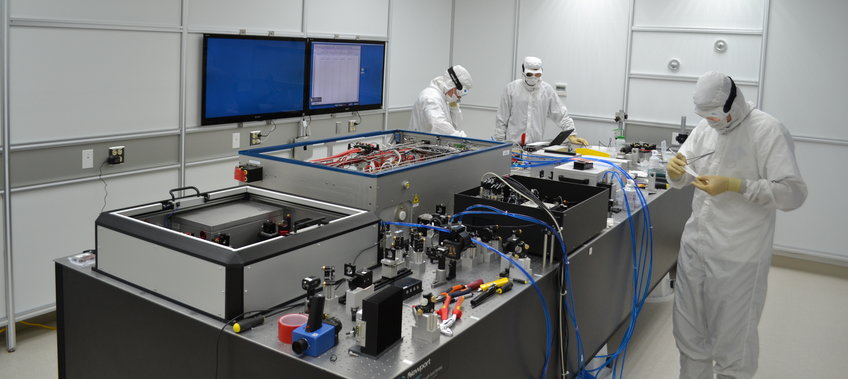
Advanced LIGO
The AEI is a partner in the aLIGO project and contributes the pre-stabilized laser system for all aLIGO detectors. Furthermore AEI scientists are involved in the commissioning and operation of the aLIGO interferometers.
The Advanced LIGO (aLIGO) detector will eventually be more than ten times more sensitive, and over a much broader frequency band, than initial LIGO.
AEI carries subsystem responsibility for the Advanced LIGO 200 W pre-stabilized laser systems. In 2010-2012, AEI has provided, delivered and installed the laser systems both at the Hanford and Livingston observatory sites. The work on the PSL is split between the Laser Zentrum Hannover which concentrates on the laser development and the AEI which is in charge of diagnostic, control and stabilization of the high power laser system.
The Advanced LIGO pre-stabilized laser systems
The aLIGO PSL consists of a 2 W Nd:YAG seed laser which is amplified via a Nd:YVO amplifier stage to 35 W. This 35 W laser serves as a master laser in an injection-locking scheme to seed a 200 W Nd:YAG high power oscillator stage. The output of the high power stage is spatially filtered by a newly developed bow-tie pre-mode cleaner (PMC) resonator which transmits 165 W in the fundamental Gaussian mode with only 1 % of the power in higher order modes. The PMC has two auxiliary ports to pick-off beam samples for the power and frequency stabilization. A diagnostic breadboard (DBB) is an integral part of the PSL and allows for a fully automated characterization of the 35 W and the 200 W laser with regard to temporal and spatial fluctuations and the spatial beam quality.
Since their installation the aLIGO PSLs operate stable and provide reliable light sources for the gravitational wave detectors.
In addition to the lasers at the LIGO site a copy of the 200 W PSL is operated in the AEI labs to evaluate the long-term performance of the system and to work on the optimization of system components. Furthermore the highly-stable 165 W laser beam is used in several experiments to generate high power beams at different wavelengths and with novel spatial beam profiles.